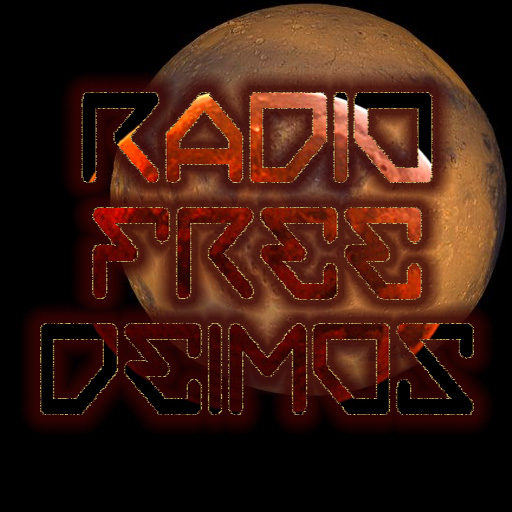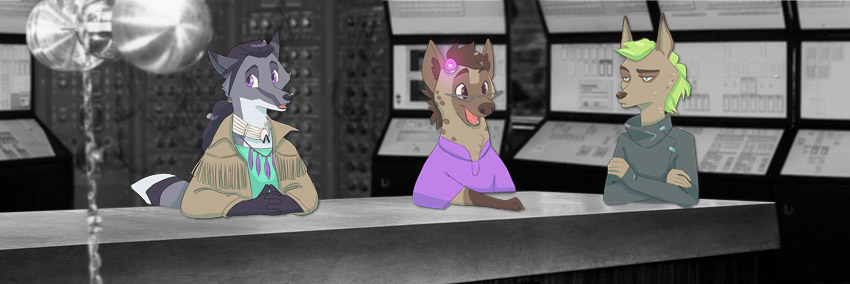Let’s talk industrial and biological horror! Whines and Corbeau are trapped in a lonely cabin, Ashtaar and YT separated by a thunderstorm. But it’s okay, we have our podcasting equipment.
Episode #58 – Blight Spots!
Audio improved significantly! But both hosts have a cold, so you really can’t tell.
Show Notes
I won’t find a link to the article Whines references, but if you want to know more, if not MUCH more, about the aurora-like phenomemonmeon STEVE, you can read up on it here.
Show Notes
♃ 0.01.45— What’s a blight zone? It’s what happens when Corbeau forgets words, it’s actually blight spots. These are places where transcendent energy forces its way into Sol in a self-perpetuating biological horror. Sometimes this happens in an industrial accident. Other times, the Power Cosmic blasts through some unsuspecting vector and turns them into a quarter mile of corrupt terrain. Either way, depends on what edition you’re reading.
♃ 0.04.19— Early HSD didn’t really have the cosmic horror elements that show up later in Sound and Silence and beyond. Earlier in HSD’s lore the blight spot concept is really more of a distant future echo of the nuclear accident. It takes forever to clean up, has a strange but generally subtle effect on the world around it. Blight Spots are caused by sabotage and industrial accidents, but don’t portend any great threat. That changes a bit in 2.0, when they become rather more whisper-like, manifestations of weird energies from beyond. Fundamentally mindless, but the universe itself is more malign.
♃ 0.04.19— I can’t remember what the name of the movie about the evil fetus monster. There are a lot of evil fetus movies, which may or may not be a surprise. Any attempt to google “abortion horror” will not go good places.
♃ 0.07.12— Did HSD get a lot darker in Sound and Silence? Or was it always that dark, and the author just opened that part of it up? That may make a good subject for an interview some day. Hmm.
♃ 0.09.10— 2.0 Blight Spots are much more arbitrary, more like Lovecraftian horror (or possibly “The Ring” style Japanese horror). They are a thing that happens, an event that occurs outside of anyone’s direct control, with the arbitrary randomness of a dispassionate giant crushing a small bug. Someone exposed to too much transcendent power and cuil simply explodes into a horror zone.
♃ 0.13.05— We talk briefly about the movie “Annihilation“, pretty solid biological horror intruding into this reality and solidly on topic for the Blight Spot concept. At some point we drop a reference to “Creepshow” and to the Lonesome Death of Jordy Verrill, can’t find much in the way of the film itself but the graphic novel is floating around online. And both of these are loosely based on Lovecraft’s “The Color Out of Space.” Say what you will about HP, he did so much for short horror.
♃ 0.17.41— I talk more about this later, and I do feel like I’m reaching a bit on this comparison point: the idea of a blight spot seems intrinsically bound to buildings and structures, in either edition. However, very little of the world of Hc Svnt Dracones isn’t indoors. But at least a little bit of transcendent technology is bound up in the idea of resonant frequencies and alien geometries, so it’s not a huge stretch.
♃ 0.19.15— “The Loc Nar from Heavy Metal”…(sigh) we just rewatched “Heavy Metal” last week. It’s an anthology film, a series of wish-fulfillment shorts, with a glowing green orb of pure evil, the “Loc Nar,” as its narrative frame. Now you know.
♃ 0.19.30— Is there a connection between the FOEA (Europa’s native life forms) and blight spots? They share similar traits…mostly in that they can exist off transcendent radiation, but the hints of empathic/telepathic communication. The connection was stronger in 1.0 when a blight spot was by definition a bioprobe-related disaster.
♃ 0.21.08— As a way to expand on the idea of blight spots, I spend the next 20 minutes or so with some incoherent thoughts on flavoring blight spots with elements from the six or eight near realms that are introduced at the end of Sound and Silence. Some of these work better than others. The near realms are a handful of predefined alternate realities that are easy enough to understand that vectors can comprehend them at all (and some of them are still pretty alien!) If you have a campaign with a TTI-oriented “ghostbusters” vibe, or want more world-hopping without necessarily investing in TTI implants, these flavored blight spots might be useful to add some texture and variety to an idea that hasn’t really been fleshed out much in canon. Along with this idea I’m steering a bit away from the monstrous biohazard of 1.0 and looking more at haunted house tropes and the more lightly populated world of Annihilation, mentioned earlier. Less overwhelming horror, more mysterious environment. A lot more “original content” here than we usually put into an episode…
♃ 0.29.28— Had a hard time expressing this one without dipping into game stats: in Fractal, there are no weapon attacks. Instead you use the Focus ability, which manifests as weapons. Does that help?
♃ 0.35.35— “House of Leaves” is a heavily metatextual book, something like a haunted house novel told in like eight different styles woven together. I’m not sure the idea could have even been floated before hypertext was a thing. This review is pretty thorough look at what uniquifies House of Leaves. After a long, challenging ride, I found the ending of the book profoundly terrible, but perhaps it’s not really a horror novel? I don’t know. Anyway, maybe you should just read XKCD’s “House of Pancakes” instead. It’s cheaper and much shorter.
♃ 0.36.49— Rob Ager’s methodical discussion of the impossible spatial structure of The Shining here.
♃ 0.37.54— Okay, I had trouble with this one, the world of “Writhe” is social allegory in the form of an alternate world. You kind of have to read this one.
♃ 0.40.43— Some closing thoughts. Blight Spots might not be an intentional, malevolent thing, they may not even necessarily be a part of Hydra proper.
♃ 0.42.10— Circling back to the idea of blight spots bound to structure, and some talk about hydra as a highly science fictional threat in that it may be strongly bound to technology and structure created by sentient creatures. This is may be a limitation on Hydra? It’s certainly not one that’s mentioned in the text. Hydra grows by “illumination,” it learns more about a concept until it can metaphorically own it. Right now, it’s learning about biology, but the way it understands and has illuminated architecture and geometry may be worth exploring.
♃ 0.44.37— I won’t find a link to the article Whines references, but if you want to know more, if not MUCH more, about the aurora-like phenomemonmeon STEVE, you can read up on it here.
With thanks to Sirius Beat for our intro music, “Future Club,” and outro music, “Tronicles.” Our fun, modular header art is by Absyfield , (Thank you Ashley!) and Whines is our audio engineer.
Podcast: Play in new window | Download
Subscribe: RSS


I’m surprised you didn’t mention Akira when it came to visualizing blight spots.
Regardless, nice episode. Some interesting speculations.